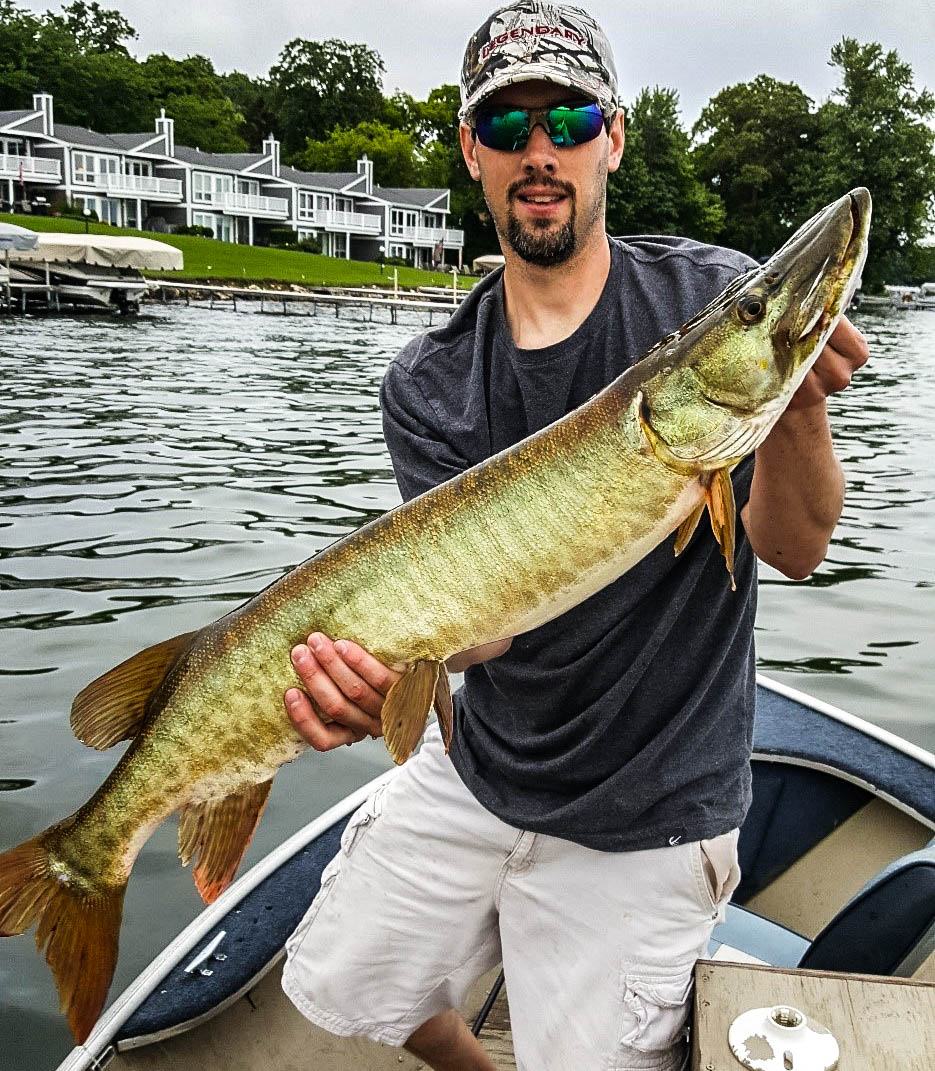I recently listened to a Joe Bucher seminar presented by Minnesota tackle company Thorne Bros. Listening to seminars by experienced musky anglers is almost always informative no matter what level you’re at, and Joe Bucher is one of the best. This particular seminar was on how to get muskies to commit. One of the great things about musky fishing is these fish will often follow the lure to the boat, giving anglers a chance to see the toothy giants, even when they’re not biting. While the sight of a 40+ inch fish following your lure can be exciting, it can also be darn right frustrating! Bucher’s seminar gave techniques for enticing bites instead of just follow ups, and as you’ll read shortly, put one in the boat for me on my last outting.

Bucher started out the seminar by saying he doesn’t want you to be the one making the most or longest casts. He wants you to be the one making the most effective retrieve on every cast. He breaks the retrieve down into the following three parts:
Part I:
Lure splashdown and the start of the retrieve
This can be a key moment in the retrieve, but it is often mishandled. Bucher expects 25% of all muskies caught to be hooked within seconds of the lure hitting the water. Muskies are the apex predators in their environment, and they will often respond to the surprise of a lure crashing down above them by quickly striking. Bucher’s advice for this early part of the retrieve is to start the retrieve immediately once the lure hits the water. For right handed anglers who cast right handed, this usually means switching hands before the lure hits the water. You should also reel in the fastest during this early part of the retrieve, and keep your rod tip up to eliminate slack in the line.
Part II:
Between the splashdown and the boat
After you get the lure going quickly, you’ve got all the water between the lure’s landing zone and the boat to entice a bite. Bucher expects another 25% of all muskies caught to be hooked in this large area of water. The key during this part of the retrieve is to avoid getting in a rhythm. It’s very easy when you’ve been fishing for hours to get into a rhythm of cast, retrieve, cast, retrieve. Even with a jerk bait, it’s easy to get into a cadence of jerk, pause, jerk, pause that will make the bait look unnatural. Bucher suggests making changes during each retrieve – speed up, slow down, pause, change directions, irregular jerks – anything to make the lure behave like a living creature.
Part III:
Boatside
This is where Bucher expects half of all fish caught will bite. The higher percentage of fish demonstrates the importance of this part of the retrieve. Every musky angler knows you finish each cast with a figure eight. The first key to an effective figure eight is the transition from the retrieve into the figure eight. You want a nice smooth turn that maintains the speed of the lure. This is easy to do until you see a large fish following your lure. Then the excitement of the moment can cause you to choke!
The second key is to make large, sweeping figure eights. Bucher suggests long rods (8 – 9 ft) to easily make big figure eights. Also, alter the depth of the lure during your figure eight – shallow when the lure is far away from you and deep when it is right under you.
Making It Count
With these techniques in mind, I headed out to a popular musky lake here in Southeast Wisconsin after work with fellow Legendary Whitetails angler James Crawford. The conditions were not ideal – with an extreme cold front rolling through the region earlier in the week and severe storms the night before. We got out on the water by 5 PM under heavy west winds. I like a nice wind chop on the water when I musky fish, but the two foot rollers made fishing in the middle of the lake quite unpleasant in my small boat.
Soon after arriving, we had a follow in about 15 feet of water. The fish was deep and so far behind the lure I didn’t see it until I had already made a few sweeps in my figure eight. I was fishing a Bulldawg, which is a large rubber jerkbait. Usually this type of bait will trigger strikes in the middle of the retrieve rather than during the figure eight.
We continued fishing for another couple hours without any more signs of fish. Around 7:15 PM we found ourselves fishing a weed edge in about 15 feet of water. I was remembering Bucher’s advice and jerking my Bulldawg as erratically as possible. Long pull, pause, short jerk, short jerk, medium jerk, pause, long pull. As I started my next jerk I felt a heavy weight on the other end. I immediately set the hook and felt the fish on the other end thrash. After an energetic, but fairly brief fight, James netted the fish.







